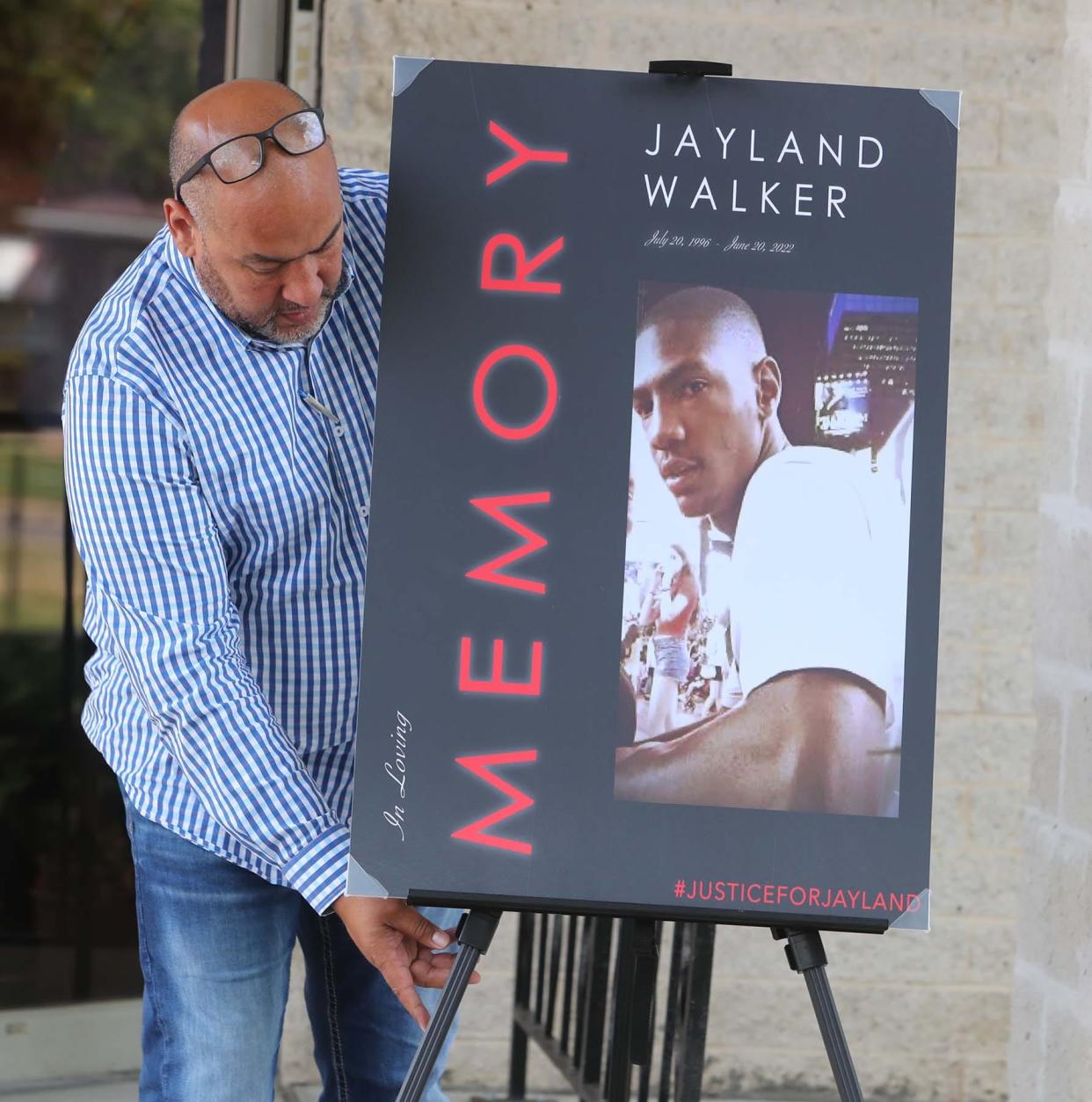Jayland Walker’s casket is open, just like Emmett Till’s 67 years ago

- Oops!Something went wrong.Please try again later.
- Oops!Something went wrong.Please try again later.
People saw what a barrage of police bullets did to Jayland Walker.
His family chose to leave his casket open for the viewing and funeral at the Akron Civic Theatre.
People leaving the visitation at the Akron Civic Theater on Wednesday morning told the Beacon Journal the mood inside was somber and quiet. They described Walker's body as being prepared for viewing but said some evidence of his wounds remained.
Akron police shot Walker about 60 times following a chase on June 27, with police body cameras capturing the scene. The city blurred images of Walker's body when releasing the footage during a news conference July 3.
Jayland Walker funeral: Watch live video from Akron Civic Theater at 1 p.m.
The Walker family's decision to show Jayland Walker’s body during funeral services is drawing comparisons to a choice by Emmett Till’s mother 67 years ago that helped galvanize the national Civil Rights Movement.
"Mamie Till Mobley opened a casket and opened our eyes," said Christopher D'Angelo Benson, president of the Emmett Till and Mamie Till Mobley Institute. "She made sure we could never look away again."
Benson, the co-author of a book with Till's cousin, the Rev. Wheeler Parker Jr., said the viewing of Till's remains shows "there is nothing more impacting than actually seeing the evidence of racial atrocity, mass shooting or police abuse."
"It is vital that we do not avert our gaze, that we keep our focus on the ultimate objective — justice," Benson added.
People are steadily going to the Akron Civic Theatre Wednesday morning to view the body of Jayland Walker, shot and killed June 27 by Akron police. Downtown Akron is largely quiet other than a caravan of-motor vehicles that drove by blowing horns. @beaconjournal pic.twitter.com/AY76TMcxZj
— Jim Mackinnon (@JimMackinnonABJ) July 13, 2022
Who was Emmett Till?
Till, who was also Black, was 14 when he left his Chicago home in 1955 to visit family in Mississippi. There, after being accused of offending a white woman in a grocery store, he was kidnapped, tortured and lynched.
His body was found two days later in a river so damaged that he could only be identified by his initials carved into a ring that was on one of his fingers.
Till’s mother, Mamie Till Mobley, insisted on an open casket so the world could see what happened.
“In order to come to grips with this tragedy, she saw Emmett as being crucified on the cross of racial injustice,” Lonnie Bunch, founding director of the National Museum of African American History and Culture told The Smithsonian magazine in 2015.
“And she felt that in order for his life not to be in vain, that she needed to use that moment to illuminate all of the dark corners of America and help push America toward what we now call the Civil Rights Movement,” Bunch said at the time.
Thousands came to see Till in his open casket.
Emmett Till Antilynching Act: Biden signs law making lynching a federal hate crime
But millions more saw Till’s body after photographs, first published in Jet magazine, showed Till’s savaged body.
The men couldn’t be charged since they were already acquitted.
Yet Till’s death and how his mother invited the world to see what happened became a pivotal moment in American history and the country’s ongoing reckoning with race.
Brandon Erby, a University of Kentucky assistant professor in the African American and African Studies program, said he understands the "symbolic gesture of the open casket as a call to action for us to never forget the life that has been lost and bear witness to how the life was taken in such a gruesome way."
Erby, whose works in the Department of Writing, Rhetoric and Digital Studies, said he is interested in another similarity between the Till and Walker cases. In Till's case, he said, the officers fabricated narratives to suggest Till deserved what happened.
In Walker's case, Erby said, the initial incident report focused on what Walker had failed to do — refusing to stop, leading officers on a chase and allegedly firing a gun out of the car — before officers shot him more than 60 times. He said this "establishes a context that [Walker] deserved what he got."
"The need to amplify his alleged criminal behaviors to justify shooting him underscores the idea that he was a threat before he was a person," Erby said.
Amanda Garrett can be reached at 330-996-3725 or agarrett@thebeaconjournal.com. USA Today reporter Claire Thornton contributed to this report.
This article originally appeared on Akron Beacon Journal: Will Jayland Walker’s open casket have same impact as Emmett Till's?

